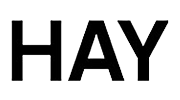
Laminated glass
Laminated glass is a type of safety glass consisting of two or more layers of glass with one or more thin polymer interlayers between them which prevent the glass from breaking into large sharp pieces. Breaking produces a characteristic "spider web" cracking pattern (radial and concentric cracks) when the impact is not enough to completely pierce the glass.
Laminated glass is used for architecture, glazing, automobile safety, photovoltaic, UV protection, and artistic expression. The most common use of laminated glass is automobile windshields and skylight glazing. In geographical areas requiring hurricane-resistant construction, laminated glass is often used in exterior storefronts, curtain walls, and windows. Laminated glass is also used to increase the sound insulation rating of a window, because it significantly improves sound attenuation compared to monolithic glass panes of the same thickness.
The interlayer is typically of polyvinyl butyral (PVB), ethylene-vinyl acetate (EVA), ionoplast polymers, cast in place (CIP) liquid resin, or thermoplastic polyurethane (TPU). An additional property of laminated glass for windows is that an adequate TPU, PVB or EVA interlayer can block nearly all ultraviolet radiation. A thermoset EVA, for example, can block up to 99.9% of all UV rays. The thermoset EVA offers a complete bonding (cross-linking) with the material whether it is glass, polycarbonate (PC), or other types of products. For sound insulation, if using EVA or TPU, no additional acoustic material is required; if using PVB, a special acoustic PVB compound is used.









